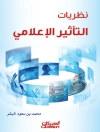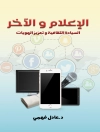This book analyzes and understands the complexity of digital poverty by considering its intersecting nature with socioeconomic and environmental poverty. The rapid digital acceleration that has characterized contemporary society in recent decades, notably accelerated by the COVID-19 pandemic, has profoundly reshaped societal structures and dynamics. Our direction depends on how we integrate digital technologies into social structures, utilize them for environmental protection, and master their use rather than being passive consumers.
Digital Environmental Poverty is split into three sections. Section I explores the multidimensional nature of poverty, emphasizing the necessity to view it beyond economic terms, and placing it within the contemporary digital-environmental evolution. Section II focuses on the environmental dimension of poverty. Section III offers case studies illustrating the interplay between social, digital, and environmental poverty. The conclusion provides recommendations to anticipate and mitigate the risk of digital environmental poverty.
Daftar Isi
Chapter 1. Introduction. Between Digital, Socioeconomic, and Environmental Poverty.- Part I Theorizing Digital Poverty.- Chapter 2. From Poverty to Digital Poverty.- Chapter 3. Determinants of Digital Poverty.- Chapter 4. The Environmental Dimension of Poverty.- Part II Environmental Poverty and Its Interconnections with
Digital Poverty.- Chapter 5. The Environmental Determinant of Digital Poverty from Macro to Micro Perspectives.- Chapter 6. A Bourdesian Approach to the Digital-Environmental Relationship.- Chapter 7. Combining Digital, Post-pandemic Recovery, and Environmental Benefits: Examples at the Macro, Meso, and Micro at Tackling Digital and Environmental Poverty.- Part III Case Study and Policy Recommendations.- Chapter 8. Digital Policy Analysis and Connections Between Digital Poverty and Environmental Poverty in the UK.- Chapter 9. Digital-Environmental Habitus in England: Families as Vulnerable Subjects at Risk of Digital Poverty.- Chapter 10. Developing Digital-Environmental Sustainability.- Chapter 11. Conclusion.
Tentang Penulis
Maria Laura is Assistant Professor in Media at the Department of Media and Communication, American University of Sharjah (UAE).
Massimo Ragnedda is Associate Professor in Media at the Department of Mass Communication, Sharjah University (UAE).












